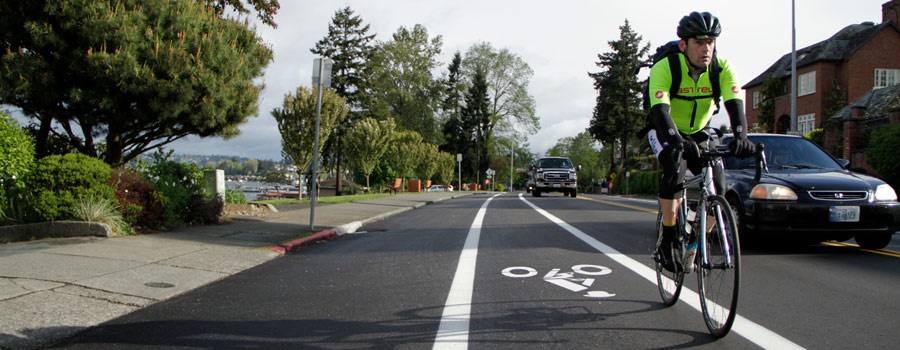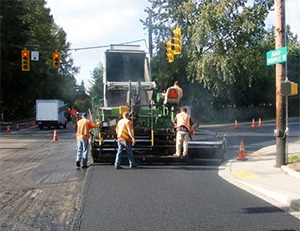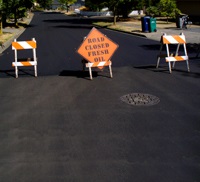- Project typeStreet preservation
- Project scheduleSpring - Fall

While repaving Lake Washington Boulevard, the City of Kirkland widened bicycle lanes to make cycling safer and more comfortable.
OVERLAY (paving)
 Kirkland repairs and conditions up to 10 lane-miles of arterials, which are the City's most traveled class of roads. The primary method of repairing arterials is to repave them. Engineers call this 'overlay.'
Kirkland repairs and conditions up to 10 lane-miles of arterials, which are the City's most traveled class of roads. The primary method of repairing arterials is to repave them. Engineers call this 'overlay.'
SLURRY SEAL (sealing)
 Typically, the City treats approximately 15 to 30 lane-miles of neighborhood and collector roads every year. The primary method of treatment for these roads is a thin layer of a mixture of emulsified asphalt, aggregate and water. Engineers refer to this as 'slurry seal.' Slurry seal can restore roads to near optimum condition for as little as $3,400 per City block. However, they do not provide structure to the road. As such, slurry seal is not effective for deteriorated roads.
Typically, the City treats approximately 15 to 30 lane-miles of neighborhood and collector roads every year. The primary method of treatment for these roads is a thin layer of a mixture of emulsified asphalt, aggregate and water. Engineers refer to this as 'slurry seal.' Slurry seal can restore roads to near optimum condition for as little as $3,400 per City block. However, they do not provide structure to the road. As such, slurry seal is not effective for deteriorated roads.
The goal of Kirkland's annual street preservation program is to keep the City's 600 lane miles of roads in conditions that are cost-effective to maintain and functional for travel. To achieve this, Kirkland repaves, patches or slurry seals up to 40 lane-miles of roads every year.
Typical annual street preservation timeline:
October to February: Street selection and design
November to January: Surveying and data collection
May to July: A.D.A. upgrades to curb ramps
July to September: Repaving arterials
July to September: Treating neighborhood roads with slurry seal
Caring for your infrastructure to keep Kirkland healthy, safe and vibrant.